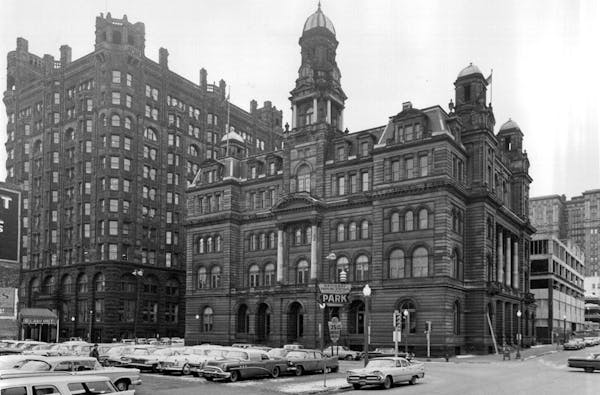Perhaps you're heading to Doors Open this weekend to learn something about architecture. Here's some good news: You already know quite a bit.
It's like classical music. An all-organ piece with lots of drama? Probably religious, and if you had to say, probably German. Lots of happy string notes dancing around? From the era of men in hose with white wigs. Screeching noise that rattles your teeth? Modern.
It's the same with buildings. We grow up absorbing know-how about building styles and purposes. In fact, you can often tell at a glance whether a building is residential, commercial, civic or religious.
Residential
Consider a standard, three-story apartment building from the 1920s. It's usually in a neighborhood with other buildings like it — buildings meant for living, not selling. The visual language of an apartment building, especially those of a certain vintage, is clear: There's the welcoming, central entry, the evenly stacked units, each with its own front window, which catches the light and offers views.
But even a contemporary 40-story condo tower looks distinct from an office tower. A condo feels welcoming with its seasonal container plantings, looky lobbies (some of which are visible from the outside of the building) and balconies.
Commercial
Office buildings tend to have a more sober, industrious look, without the homey touches of apartment buildings or condos. If you take a close look at older office buildings you might find a bit of ornamentation — columns, carved leaves, scrollwork — around the main entry or on the upper floors. That ornamentation was often classical, but sometimes gave a nod to the building's initial tenant.
Civic
These buildings tend to announce themselves with an American flag. They tend to look old, like the 1888 Minneapolis City Hall (stop laughing, Europeans), or be an old version of what the architects of the time thought the future would look like, such as the downtown Minneapolis Post Office, which was built in 1933.
If it's a more modern public building, it might look like a post-World War II school, all brick, with that less-is-more aesthetic. But in the case of many public buildings from the 1950s and '60s, less was actually just less. A 1960s post office (like the one you'll find on 55th and Nicollet Avenue S.) doesn't celebrate the relationship between the citizen and the government. Its spare style aims to reassure the public that the building is as efficient as the workers inside.
Religious
You can't mistake a church or temple for anything else. It has an element that aspires, reaches up, exalts. It often has stained glass, a steeple or points and a sign out front, sometimes with an inspirational saying that changes weekly.
A survey of styles
Now that you know how much you knew about the purpose of a building, let's move on to how to determine when a building was built.
Buildings that went up in the late 19th century tend to look massive. That's partly because steel-frame construction wasn't widely used then. Instead, thick slabs of marble, granite and limestone had to bear the weight of the upper floors. (Picture the Lumber Exchange building in downtown Minneapolis.)
Then came the classical styles, popularized by the 1893 Columbian Exposition in Chicago. The exposition's Roman- and Greek-inspired designs spurred decades of classical buildings throughout the country. (You could include the Soo Line Building in Minneapolis and St. Paul's Hamm Building among them.)
The stock market crash of 1929 was the death knell for that old-world style. But by then, forward-thinking architects had already conjured a new style for the Jazz Age, one that was refined and sleek, with abstract ornamentation. (With its Moderne setbacks and Art Deco metalwork, the Rand Tower in Minneapolis is a perfect example.)
The thing is, not much was built in the 1930s, except for a few federal buildings. And those are easy to spot. Is the structure without much ornamentation, except for a few bas reliefs of eagles? It's likely '30s.
After World War II, the steel skyscraper took off. But the style grew monotonous and familiar, so the architects of the '70s covered everything with reflective glass. When done right, it gave us the IDS Center. When done poorly, it spawned boring blue boxes.
In the '80s, the standard glass block yielded to a postmodern style that embraced everything from Minneapolis' Wells Fargo Center (a throwback to the RCA Building in New York's Rockefeller Center) to the Capella Tower (which is devoid of historical references).
If you really get into architecture, you'll be able to identify a Palladian motif, a Chicago window, an oculus on a pediment. The more you know about architecture, the more there is to learn.
Sort of like classical music. Except the buildings around us are always tuned up and playing. And the more you know, the more melodies you hear.



